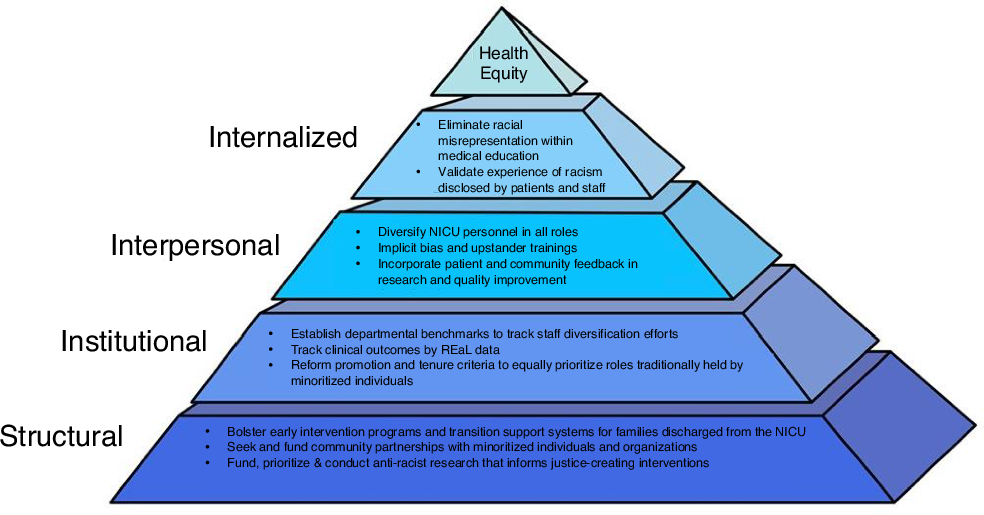City Council Champions Access to Gender-Affirming Healthcare – Boston.gov
Report on Boston’s Resolution for Gender-Affirming Healthcare and Alignment with Sustainable Development Goals
1.0 Introduction
The Boston City Council has adopted a resolution affirming its commitment to ensuring access to gender-affirming healthcare for all residents. This measure reinforces Boston’s status as a Sanctuary City for the LGBTQIA2S+ community, a designation established in March 2025. The resolution is a direct response to increasing restrictions on healthcare access at the federal level and aims to uphold the city’s dedication to an inclusive, healthy, and equitable environment, in line with key United Nations Sustainable Development Goals (SDGs).
2.0 Background and Driving Factors
The Council’s action was prompted by several critical developments that threaten public health and equality, thereby challenging progress toward the SDGs.
- Federal Executive Orders: Since January 2025, a series of federal orders have been issued to restrict access to gender-affirming care, reproductive health services, and HIV/AIDS prevention and treatment.
- Impact on Scientific Research: These federal actions also seek to limit the use of gendered language in scientific research, undermining evidence-based policy.
- Local Healthcare Pressures: Local medical institutions have recently ceased providing gender-affirming care to individuals under the age of 19, raising concerns about the influence of political coercion on healthcare delivery.
3.0 Alignment with Sustainable Development Goals (SDGs)
The resolution directly supports the achievement of several SDGs by addressing systemic inequalities and promoting universal access to essential services.
- SDG 3: Good Health and Well-being: By safeguarding access to gender-affirming care, reproductive services, and HIV/AIDS treatment, the resolution promotes universal health coverage (Target 3.8) and ensures the physical and mental well-being of a vulnerable population group.
- SDG 5: Gender Equality: The commitment to gender-affirming healthcare is a fundamental component of achieving gender equality. The policy directly counters discrimination and supports the rights and empowerment of transgender and gender-diverse individuals, aligning with Target 5.1 to end all forms of discrimination.
- SDG 10: Reduced Inequalities: The resolution is a targeted intervention to reduce inequalities (Target 10.2) by protecting the LGBTQIA2S+ community from discriminatory laws and policies. It ensures that access to healthcare is not denied based on gender identity, thereby promoting social inclusion.
- SDG 16: Peace, Justice and Strong Institutions: The Boston City Council is acting as a responsive, inclusive, and accountable institution (Target 16.6) by upholding local values and international human rights standards in defiance of federal overreach. This action promotes non-discriminatory laws and policies for sustainable development (Target 16.B).
4.0 Strategic Commitments of the Council
The resolution outlines a clear strategy to protect and expand healthcare access, reinforcing Boston’s role as a leader in public health and human rights.
- Upholding Evidence-Based Policy: The Council reaffirms its commitment to policies grounded in science and medical evidence, opposing actions that disregard them.
- Opposition to Federal Actions: The resolution formally expresses the Council’s opposition to federal measures that infringe upon the rights and well-being of the LGBTQIA2S+ community.
- Partnership for Healthcare Access: A key objective is to partner with local healthcare providers to maintain and expand access to comprehensive gender-affirming care for residents of all ages.
5.0 Conclusion
The Boston City Council’s resolution is a significant measure to protect the health and rights of its LGBTQIA2S+ residents. By anchoring its commitment in the principles of universal healthcare, equality, and institutional justice, the city actively contributes to the advancement of the Sustainable Development Goals and reinforces its dedication to creating a supportive and healthy environment for all its diverse communities.
Analysis of SDGs, Targets, and Indicators
1. Which SDGs are addressed or connected to the issues highlighted in the article?
The article highlights issues that are directly and indirectly connected to several Sustainable Development Goals (SDGs). The primary focus on healthcare access, equality, and institutional response links the article to the following SDGs:
- SDG 3: Good Health and Well-being
- SDG 5: Gender Equality
- SDG 10: Reduced Inequalities
- SDG 16: Peace, Justice and Strong Institutions
2. What specific targets under those SDGs can be identified based on the article’s content?
Based on the article’s focus on ensuring healthcare access for the LGBTQIA2S+ community in response to restrictive policies, the following specific targets can be identified:
-
SDG 3: Good Health and Well-being
- Target 3.3: End the epidemics of AIDS and other communicable diseases. The article explicitly mentions the federal government’s aim to restrict “HIV/AIDS prevention and treatment,” which Boston’s resolution seeks to counteract.
- Target 3.7: Ensure universal access to sexual and reproductive health-care services. The resolution’s commitment to “gender-affirming healthcare” and protecting “reproductive health services” aligns directly with this target.
- Target 3.8: Achieve universal health coverage, including access to quality essential health-care services for all. The core of the resolution is to ensure “access to gender-affirming healthcare for all residents,” which is a commitment to universal health coverage for a specific, vulnerable population.
-
SDG 5: Gender Equality
- Target 5.1: End all forms of discrimination against all women and girls everywhere. While the target specifies women and girls, its principle extends to ending gender-based discrimination. The resolution opposes federal actions that undermine the rights of gender-diverse individuals, which is a form of gender-based discrimination.
- Target 5.6: Ensure universal access to sexual and reproductive health and reproductive rights. The article’s emphasis on protecting “gender-affirming care” and “reproductive health services” for the LGBTQIA2S+ community is a direct effort to uphold these rights against political coercion.
-
SDG 10: Reduced Inequalities
- Target 10.2: Empower and promote the social, economic and political inclusion of all, irrespective of age, sex, … or other status. The resolution to make Boston a “Sanctuary City for the LGBTQIA2S+ community” is a clear action to promote the social inclusion and well-being of this group, whose status is being targeted by federal policies.
- Target 10.3: Ensure equal opportunity and reduce inequalities of outcome, including by eliminating discriminatory laws, policies and practices. The Council’s resolution is a direct response to discriminatory federal executive orders and aims to ensure equal access to healthcare, thereby reducing inequalities of outcome in public health.
-
SDG 16: Peace, Justice and Strong Institutions
- Target 16.b: Promote and enforce non-discriminatory laws and policies for sustainable development. The Boston Council’s resolution is a local policy action designed to enforce non-discrimination in healthcare access, directly opposing what it views as discriminatory federal policies and strengthening the city as an inclusive institution.
3. Are there any indicators mentioned or implied in the article that can be used to measure progress towards the identified targets?
The article, being a policy announcement, does not provide explicit data or indicators. However, it implies several qualitative and quantitative indicators that could be used to measure progress:
-
For SDG 3 (Good Health and Well-being)
- Implied Indicator for Target 3.3: The continued availability and accessibility of HIV/AIDS prevention and treatment services within Boston, which could be measured by the number of clinics providing these services or the number of residents accessing them.
- Implied Indicator for Targets 3.7 & 3.8: The number of local healthcare providers that “maintain and expand access to gender-affirming care for residents of all ages.” Progress could be measured by tracking the number of individuals, particularly those under 19, receiving gender-affirming and reproductive healthcare services in the city.
-
For SDG 5 (Gender Equality)
- Implied Indicator for Targets 5.1 & 5.6: The existence and enforcement of the Council’s resolution itself serves as a key indicator of a legal and policy framework that guarantees access to sexual and reproductive health services without discrimination based on gender identity.
-
For SDG 10 (Reduced Inequalities)
- Implied Indicator for Targets 10.2 & 10.3: The successful implementation of Boston’s status as a “Sanctuary City for the LGBTQIA2S+ community.” This could be measured through surveys on the sense of safety and inclusion among LGBTQIA2S+ residents and by tracking the city’s ability to protect residents from the impact of restrictive federal policies.
-
For SDG 16 (Peace, Justice and Strong Institutions)
- Implied Indicator for Target 16.b: The adoption and implementation of the resolution is a direct indicator of a local institution promoting and enforcing a non-discriminatory policy. The effectiveness of the “partnering with local healthcare providers” could be another measure of institutional strength and commitment.
4. Table of SDGs, Targets, and Indicators
| SDGs | Targets | Indicators (Implied from Article) |
|---|---|---|
| SDG 3: Good Health and Well-being |
3.3: End the epidemic of AIDS. 3.7: Ensure universal access to sexual and reproductive health-care services. 3.8: Achieve universal health coverage. |
– Continued provision of “HIV/AIDS prevention and treatment.” – Number of residents of all ages with access to “gender-affirming care” and “reproductive health services.” – Number of healthcare providers maintaining and expanding these services. |
| SDG 5: Gender Equality |
5.1: End all forms of discrimination. 5.6: Ensure universal access to sexual and reproductive health and reproductive rights. |
– Existence and enforcement of the Council’s resolution as a policy framework against gender-based discrimination in healthcare. – Guaranteed access to care for the “LGBTQIA2S+ community.” |
| SDG 10: Reduced Inequalities |
10.2: Promote social inclusion of all. 10.3: Ensure equal opportunity and eliminate discriminatory policies. |
– Implementation of Boston’s status as a “Sanctuary City.” – The resolution itself as a counter-measure to discriminatory federal executive orders. – Equal access to healthcare for the LGBTQIA2S+ community despite federal restrictions. |
| SDG 16: Peace, Justice and Strong Institutions | 16.b: Promote and enforce non-discriminatory laws and policies. |
– The adoption of the Council’s resolution as a non-discriminatory local policy. – Successful partnerships between the Council and local healthcare providers to uphold residents’ rights. |
Source: boston.gov
What is Your Reaction?
 Like
0
Like
0
 Dislike
0
Dislike
0
 Love
0
Love
0
 Funny
0
Funny
0
 Angry
0
Angry
0
 Sad
0
Sad
0
 Wow
0
Wow
0


















































.jpg.webp?itok=0ZsAnae9#)



/environment-climate-change-and-health-(ech)/water-sanitation-hygiene-and-health-(wsh)/landfill-tuvalu-36092.tmb-1200v.jpg?sfvrsn=5c21fe40_1#)



















